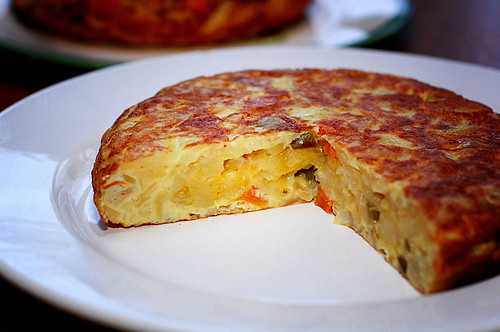
I’ve been thinking some about my sister’s references to the Ingalls family in her “Little House on the Prairie” series, especially some of her initial comments about seasons seeming much less real to us these days in regards to eating and food. This is unavoidably true; it’s part of the mixed blessing of our advances in transportation and communication: we can be in touch with so many more people in so many ways, but we also have less sense of place, particularly when it comes to the natural world. We can so easily lose sight of nature and its reality: a world which is fundamental for understanding the supernatural realm as well, as we see in Jesus’ parables, with their references to seeds and sparrows. But there are ways of re-integrating an awareness of the natural world into our daily lives. It is a great blessing in this regard that the liturgical season of Lent more or less coincides with the end of winter and the beginning of spring. It is, thus, both penitentially and practically, appropriate to make use of what we have, without wasting.
Traditionally, in cultures and climates where there wasn’t much to eat in the winter, people found ways of preserving what was plentiful in other seasons: canning, salting (per my mother’s reflections) and so forth. Lent, a time of food-deprivation, was also the time when you would be using up the end of the winter stores in preparation for the new crops and supplies of spring and summer.
I was reminded of this at the end of last week, when we had *another* significant snow storm, and my older daughters were home from school, and I was unable to go to the supermarket. What to make? Well, I had a lot of eggs! I also had some potatoes that were looking a little past their prime, and some onions (ah, the beauty of food that stores well!). Plus some stale bread I wanted to get rid of. We always have pasta and cheese and so I made macaroni and cheese and Spanish tortilla (like a kind of frittata; recipes follow). This led me to reflect, however, on the importance and relevance of small food deprivations during Lent; trying to base my food choices on what I have rather than what I feel like eating. There is a spiritual dimension to this as well; recognizing that I have already been given a great deal more than what I need. But sometimes I need extreme circumstances to make me see that.
Southern Mac and Cheese (adapted from Everyday Food)
Serves 4
• Coarse salt and ground pepper
• 1 tablespoon butter, melted, plus more for ramekins
• 1/2 pound elbow macaroni [I double this—I want a lot of food, and I think it’s still good with a full pound…but if you want it really saucy and rich, double everything else]
• 2 cups shredded sharp cheddar (8 ounces)
• 2 large eggs
• 1 cup half-and-half
• 1 small garlic clove, minced [ I prefer using about 1 tsp of garlic salt and eliminating the other garlic and salt; the clove garlic seems too strong to me but the garlic kick adds flavor]
• 2 slices white sandwich bread, torn [this is fine without the breadcrumbs, too: any form will do, but I especially like it for using up otherwise-dead bread]
Directions
1. Set a large pot of salted water to boil. Preheat oven to 350. Butter four 10-ounce ramekins [I almost always do this in a 9 x 13 inch pyrex—pretty much anything oblong will do—I have ramekins but they’re too fancy for my every-day taste, and too small for our appetites!].
2. Cook pasta 3 minutes short of al dente; drain.
3. In a large bowl, whisk together 1 1/2 cups cheddar, eggs, half-and-half, garlic, 1/2 teaspoon salt, and 1/8 teaspoon pepper. Add pasta, and stir to combine; divide among ramekins.
4. In a food processor, pulse bread and melted butter until coarse crumbs form; season with salt and pepper. Dividing evenly, top pasta mixture with 1/2 cup cheddar, then sprinkle with breadcrumbs. Place ramekins on a rimmed baking sheet. Bake until mac and cheese is golden and bubbling, about 20 minutes. [Increase this to 25-30 minutes if making in larger pyrex] .Let stand 5 minutes before serving.
And here is a link to the Spanish Tortilla I made:
http://allrecipes.com/Recipe-Tools/Print/Recipe.aspx?RecipeID=147109&origin=detail&servings=6
It’s not a perfect recipe (I don’t think you should have to change pans so much) AND I left out the red pepper, ham, and parsley (I like my tortilla simple and my family is iffy on parsley…and it WAS Friday!) but I was generally happy—the trick for me with Spanish tortilla is a) making sure the potatoes get cooked all the way through-so err on the side of slicing too thin rather than too thick and b) flipping it without making a mess. This recipe worked well on both those counts. I used a cast-iron skillet which I think is probably a good choice for most people…(just be a bit careful when it comes time to ‘flip’).


what a great reminder about using what we have! and such delicious ways to do so too! thanks!
ReplyDeleteIndeed, "leftovers" (if we may call them that) can sometimes spark our imagination, and lead us to (force us to ?) try new combinations...
ReplyDelete